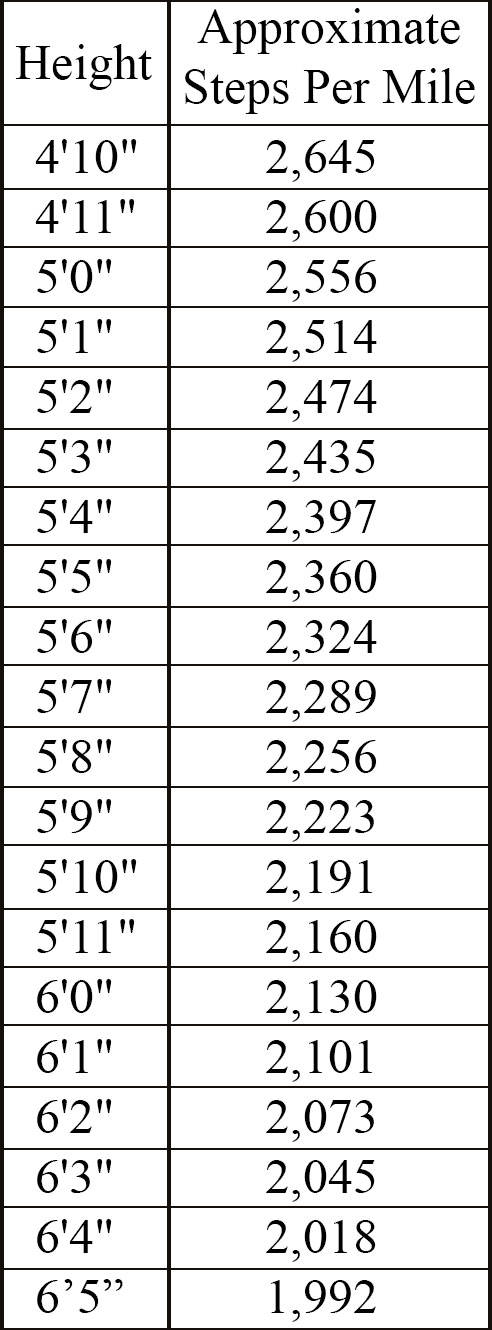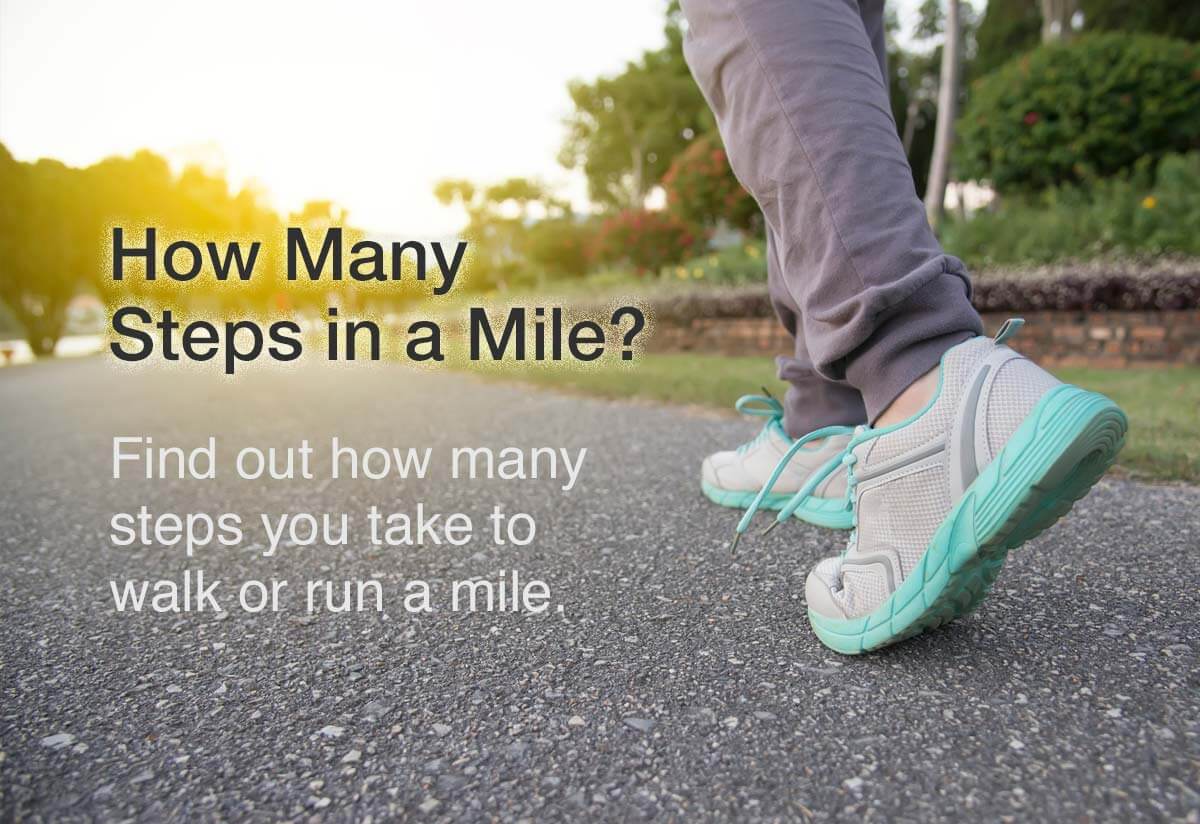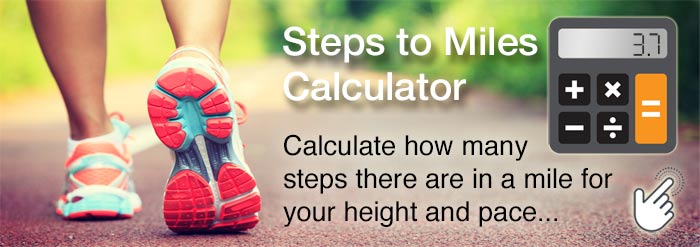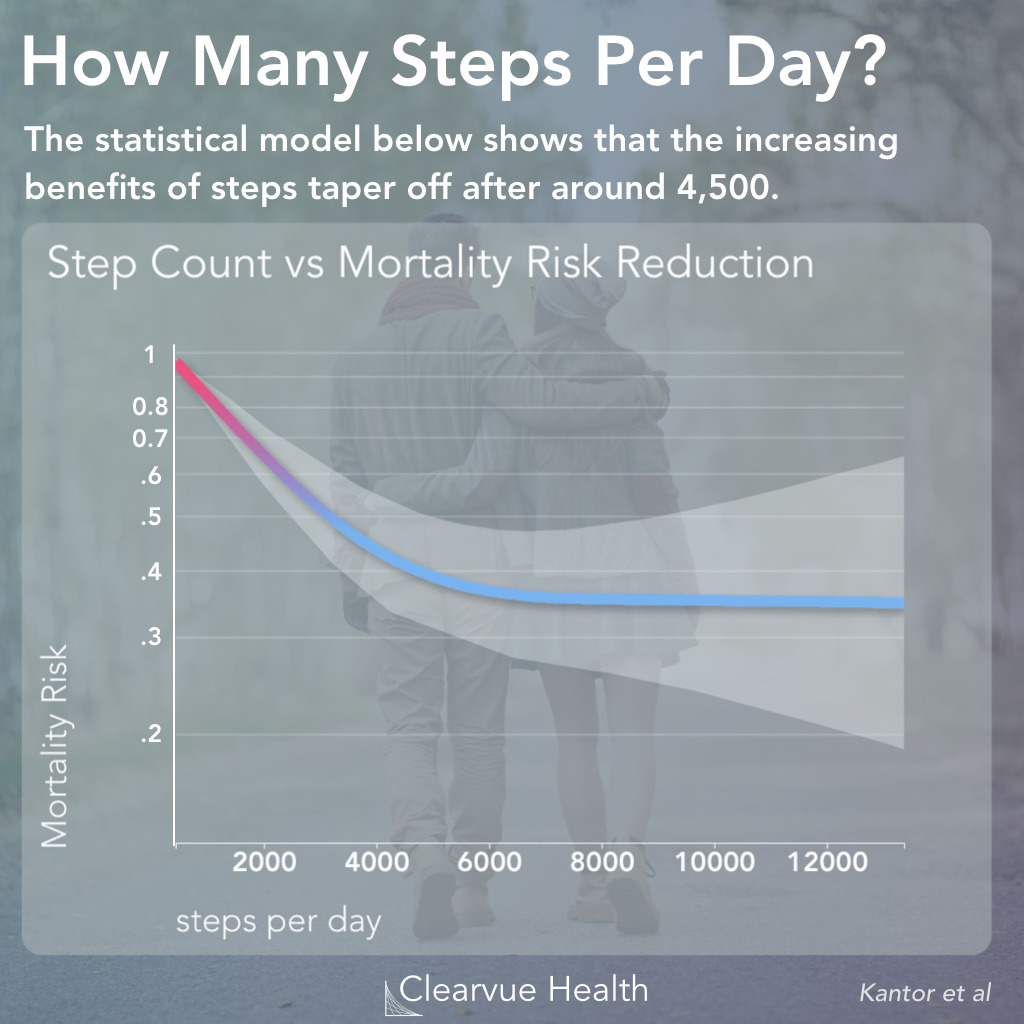The Curious Case of Measuring a Mile
The mile, a unit of distance, has a rich history that spans various cultures and sports. Its origin can be traced back to the Roman mille passus, which translates to “thousand paces.” In modern times, a mile is officially defined as 1,609.34 meters or 5,280 feet. However, estimating a mile based on steps has long been a popular method, especially among walkers and runners.
Understanding Stride Length: A Key Factor in Step Counting
Stride length, the distance covered by one full stride, plays a crucial role in estimating the number of steps in a mile. Stride length varies from person to person, depending on factors such as height, leg length, and walking or running style. For instance, taller individuals with longer legs generally have longer strides, while shorter individuals with shorter legs typically have shorter strides.
To provide a rough estimate, the average walking stride length is about 2.5 feet, while the average running stride length is around 6.5 feet. However, these values can differ significantly between individuals. For example, an individual with a height of 5’5″ might have an average walking stride length of approximately 2.2 feet, while a 6’2″ individual might have an average walking stride length of around 2.8 feet.
Typical Step Counts for a Mile: A Range to Consider
When estimating how many steps are in a mile, it’s essential to acknowledge the significant individual variations in stride length. While the average number of steps taken to cover a mile can vary, a general range is between 1,500 to 2,500 steps. This range accounts for the differences in walking and running styles, as well as variations in stride length among individuals.
For example, a person with a shorter stride length may take closer to 2,500 steps to complete a mile, while someone with a longer stride length might take around 1,500 steps for the same distance. It’s important to note that these values are approximate and can change depending on factors such as walking or running speed, fitness level, and comfort.
How to Measure Your Personal Step Count for a Mile
To determine your personal step count for a mile, follow these steps to ensure accuracy and consistency:
- Find a suitable location: Ideally, use a flat, measured track or a clearly marked path for the most accurate results. This will help eliminate any discrepancies due to curved paths or inaccurate distance measurements.
- Warm-up: Before beginning, perform a brief warm-up to prepare your body for walking or running. This can include light stretching or a slow-paced walk around the area.
- Start counting: Begin counting your steps as you start walking or running along the measured path. Ensure that you maintain a consistent pace throughout the process.
- Measure the distance: Continue counting your steps until you reach the one-mile mark. Use a GPS device, a marked sign, or another reliable method to confirm that you have covered exactly one mile.
- Calculate your steps: Divide the total distance (in feet) by your average stride length (in feet) to find the number of steps it takes you to cover a mile. For example, if your total distance is 5,280 feet (one mile) and your average stride length is 2.5 feet, you would divide 5,280 by 2.5, resulting in approximately 2,112 steps.
- Walking or running surface: The surface you walk or run on can impact your stride length and step count. For example, running on a softer surface like grass or sand may result in shorter strides and more steps compared to running on a firm surface like concrete or a track.
- Incline: Uphill or downhill terrain can also affect your step count. Walking or running uphill typically results in shorter strides and more steps, while downhill terrain can lead to longer strides and fewer steps.
- Fatigue: As you become tired during a walk or run, your stride length may naturally shorten, leading to an increased step count. Monitoring your energy levels and adjusting your pace accordingly can help maintain consistency in your step count.
- Benefits: Technology can provide accurate step counts, track progress over time, and offer additional fitness insights. Many devices and apps also include gamification features and social sharing options to motivate users and foster a sense of community.
- Limitations: Devices and apps may not always account for individual variations in stride length or factors like incline and surface. Additionally, some devices and apps require a constant internet connection or may consume significant battery life.
By following these steps, you can determine your personal step count for a mile and gain a better understanding of how your stride length and pace impact your overall step count.
Factors Influencing Step Count: Considerations for a More Precise Estimate
Various factors can affect stride length and step count when estimating how many steps are in a mile. Understanding these factors can help you achieve a more accurate estimate and better monitor your fitness progress.
By accounting for these factors, you can improve the accuracy of your step count and gain valuable insights into your fitness routine. Regularly measuring your step count for a mile can help you track your progress, set realistic fitness goals, and promote overall health and well-being.
Leveraging Technology: Gadgets and Apps for Step Counting
In today’s digital age, various wearable devices and smartphone apps can help you track your steps, distance, and other fitness metrics with ease and accuracy. These tools offer numerous benefits and limitations when it comes to step counting and monitoring your progress towards understanding how many steps are in a mile.
Wearable Devices
Wearable devices like fitness trackers, smartwatches, and pedometers can be clipped onto clothing or worn on the wrist. These devices use accelerometers and other sensors to measure your movement and estimate the number of steps you take. Some popular wearable devices include Fitbit, Garmin, and Apple Watch. While these devices generally provide accurate step counts, they may not always account for factors like arm swing or varying stride lengths.
Smartphone Apps
Numerous smartphone apps are available for both iOS and Android devices that can track your steps using your phone’s built-in accelerometer. Examples include Google Fit, MapMyRun, and Nike Run Club. These apps often offer additional features like GPS tracking, workout history, and social sharing. However, they may consume more battery life and require you to carry your phone at all times.
When using technology for step counting, consider the following benefits and limitations:
By understanding the benefits and limitations of technology for step counting, you can make informed decisions about which tools best suit your needs and help you accurately monitor your progress towards determining how many steps are in a mile.
Applying Your Step Count Knowledge: Real-Life Scenarios and Benefits
Understanding your step count for a mile can be beneficial in various real-life scenarios, helping you set fitness goals, monitor progress, and promote overall health and well-being. Here are some examples of how this knowledge can be applied:
Setting Fitness Goals
By knowing your typical step count for a mile, you can set realistic and achievable fitness goals. For instance, if you aim to walk 10,000 steps per day, you can calculate how many miles that equates to and plan your daily routine accordingly.
Monitoring Progress
Tracking your step count over time can help you monitor your progress towards your fitness goals. By comparing your current step count to your historical data, you can determine whether your fitness level is improving or if adjustments are needed to reach your objectives.
Promoting Overall Health and Well-being
Regularly incorporating walking or running into your daily routine can have numerous health benefits, such as improved cardiovascular fitness, reduced stress levels, and enhanced mental well-being. By understanding your step count for a mile, you can better plan your physical activities and ensure you are consistently meeting your fitness goals.
In conclusion, understanding how many steps are in a mile can be a valuable tool for individuals looking to improve their fitness, monitor their progress, and promote overall health and well-being. By incorporating this knowledge into your daily life, you can make informed decisions about your physical activities and set achievable fitness goals.







